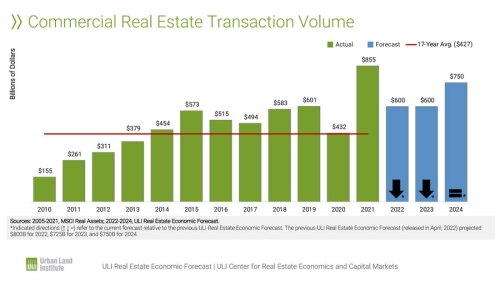Retail customers have more options than ever, so traditional shopping centers have to work hard to stay competitive. At the 2018 ULI Europe Conference in Berlin, a number of discussions on the future of the retail business looked at the changing shopping center ecosystems and what developers could be doing better.
“Medium-size shopping centers are suffering everywhere,” said Barbara Knoflach, deputy chief executive officer of BNP Paribas Real Estate in charge of investment management. That evaluation is supported by a recent ULI Europe study on shopping centers that found larger centers are focusing on becoming destinations with leisure options such as bowling, cinemas, gyms, and galleries, while smaller neighborhood centers are adding community uses, such as libraries, health care facilities, and coworking features.
Within shopping centers, midmarket retail chains are having the most problems, said Alexander Otto, chief executive officer of ECE Projektmanagement and a ULI lifetime trustee. The low end of the market, such as Primark and TK Maxx/TJ Maxx, is doing fine, as is the other end of the market, high-end and luxury retail, he said. But middle-of-the-road brands have to reinvent how they sell themselves.
Anchor tenants today need to be real flagships with modern layouts, though building such stores is a long-term endeavor, Otto said. Some malls are embracing the idea of supermarkets as anchor tenants to bring back daily traffic and ensure long-term viability.
All the speakers were bullish on expanding leisure, entertainment, and gastronomy options in shopping centers. Food halls have become a popular format around the globe, as seen in the success of Eataly, which has more than 30 large-scale Italian markets around the world. Businesses providing services that cannot be obtained online—such as shoe repair shops, locksmiths, and salons—are also very important for European shopping centers, Otto said.
The right location might be the most important factor in a shopping center’s future success or failure. “Assets in wrong locations that are poorly managed will be out of business in a few years,” Otto predicted.
Shopping centers on the outskirts of a city will increasingly have to work harder to convince customers to make the trek. ECE, which manages 200 shopping centers in a dozen countries, recently published a report on the shopping center of the future, which it predicts will better integrate the online and off-line worlds and focus more on its role as the “last mile” in the logistics chain.
On the other hand, the biggest change for the retail market is a shifting focus from a distribution mechanism to a brand-based function, said Scott Malkin, founder of luxury outlet pioneer Value Retail. When Amazon Prime can deliver items the same day, the best way to keep bringing customers back is an ever-changing merchandise mix.
Retail locations for luxury brands serve as places to experience products and interact with the brand, a design trend that is trickling down into the mass-market space. Even though a person can buy a handbag from Hermès online, for instance, online shopping makes up only 8 percent of total luxury sales. Luca Solca, managing director of luxury goods for Exane BNP Paribas, expects that figure to double in the next three to five years.
“If you know what you want, you’ll buy it online. But if you don’t know what you want, you’ll have to go to a store and experience the products,” Solca said. “The future of retail is about curating and proposing new ideas. We live in a digital cocoon; retail will take us outside it.”
The internet lowers the barrier to entry for new brands, Solca said, because they can get started without the expenses of prime retail space or salespeople. And online shopping has put a spotlight on brands that do not have as perfect control of their distribution chains as luxury companies do; brands can no longer pretend that discounts do not exist when customers can do their own price check right in the store.
Otto sees development of the retail sector in Asia outpacing shopping trends in Europe. Whereas Europe is just starting to accept mobile and cashless payments, they are commonplace in China. “China is jumping a lot of stages of development that took us decades,” he said. “So much wealth being accumulated there: Chinese investors will be interested in Europe and the old world, and we have to be prepared to change here.”
Jürgen Fenk, co–chief executive officer of Signa, which owns Germany’s Karstadt department stores, said the beauty of that chain was that the real estate assets were embedded in the centers of German cities, making them perfect candidates for reuse. In New York City, Hudson’s Bay sold its Lord & Taylor flagship store to WeWork, which is using three-quarters of the former retail space for coworking.
Consolidation in the retail market—such as Unibail-Rodamco’s acquisition of Westfield in December—is a sign of companies getting tired of slow growth, Solca said. And managing luxury-goods brands is getting more difficult, which might explain why Kate Spade was acquired by Coach last year. Pooling talent and streamlining the supply and distribution chains can save a luxury company a lot of money.
Otto expects more consolidation in the coming years, though he said “mergers often lead to disappointment.” But it is an important time for collaboration, and innovation by one company will benefit the entire market, he said.
Mario C. Bauer, of Aperitivo and adviser to Vapiano, said he predicts more localization by brands, as is done by Starbucks, which adapts some stores to cities by design or with subbrands. In the end, successful retail will focus on what customers need and want—and what they might not even know they want yet.


